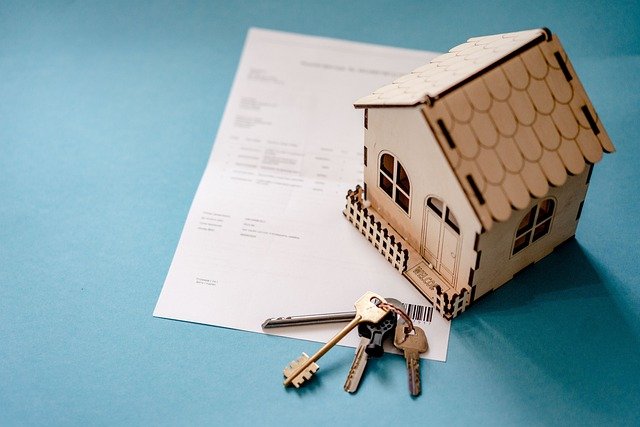Rent-to-Own Homes: A Smart Pathway to Homeownership
Rent-to-own agreements blend renting and buying to help people reach homeownership when a traditional mortgage isn't immediately achievable. Learn how lease-option deals work, how rent credits and option fees function, and the pros and cons for both tenants and sellers so you can decide if this alternative route fits your financial goals.

How a rent-to-own arrangement typically works
A rent-to-own (also called lease-option or lease-purchase) agreement sets the stage for a future sale while the tenant occupies the property. At the start, the buyer and seller agree on a purchase price, either reflecting current market value or a projected price at the end of the lease. The tenant usually pays an upfront option fee in exchange for the exclusive right to buy the home later. Throughout the lease term, a portion of each month’s rent may be designated as a rent credit to accumulate toward the eventual down payment.
Lease terms vary widely: common durations run from one to three years, and the contract should spell out who handles maintenance, how repairs are managed, and what happens if the tenant wants to buy early or cannot secure financing at the end of the term. Clear documentation of the agreed purchase price, how rent credits are tracked, and conditions for exercising the option are essential to prevent misunderstandings.
Benefits for prospective buyers
Rent-to-own can be a practical bridge for people who need extra time to qualify for a mortgage. It allows you to:
- Live in the home you plan to purchase while saving for a down payment.
- Build equity through rent credits rather than waiting to purchase a different property later.
- Improve your credit score or stabilize income before applying for a mortgage.
- Evaluate the house and neighborhood over time to confirm it meets long-term needs.
For someone repairing credit or assembling a down payment, the option fee and monthly rent premium act like a forced savings mechanism. Additionally, having a purchase price set in advance can be attractive if you expect local market prices to rise.
What sellers should weigh before offering rent-to-own
Rent-to-own can expand a seller’s pool of potential buyers and produce steady rental income while the house remains on a path to sale. Sellers might negotiate a higher sale price or rental rate to compensate for the flexibility they provide. It can be particularly useful in slow markets or for sellers who want to earn income while waiting for a better tax or timing scenario.
However, sellers also face downsides. If the tenant decides not to buy or cannot obtain financing, the seller must market the property again and may need to return to square one. Sellers also risk missing broader market appreciation if home prices jump during the lease. Contract clarity is crucial: outline obligations for maintenance, who pays property taxes and insurance, and how breakage of the agreement will be handled.
Drawbacks and risks for both parties
Rent-to-own arrangements are not risk-free. Tenants can lose the option fee and any rent credits if they opt not to purchase or fail to secure a mortgage by the agreed deadline. Unexpected repairs or responsibilities shifted to the tenant can be costly if not clearly defined.
Sellers risk being tied to a price that later proves below market value or dealing with a tenant who does not follow through. Both sides may also face legal complexity: ambiguous language in the contract can lead to disputes over credits, default remedies, or timing. Because of these stakes, many experts recommend legal review and detailed, written accounting of fees and credits.
Practical tips to protect your interests
Whether you are the prospective buyer or the seller, take practical steps to reduce risk:
- Hire a real estate attorney to review or draft the agreement.
- Require that rent credits and option fees be documented and, where possible, held in escrow.
- Set clear responsibilities for maintenance and repairs in the lease.
- Include timelines and contingencies for financing, appraisal, and inspections.
- Obtain a clause that addresses what happens to the property if the tenant defaults or decides not to purchase.
Buyers should also get a sense of the lender requirements they will need to meet at the end of the lease so they can prepare in advance. Sellers should vet tenants carefully and confirm their intent and ability to buy at the end of the term.
| Feature | Rent to Own | Traditional Mortgage |
|---|---|---|
| Initial Costs | Option fee plus monthly rent and a rent premium | Down payment, closing costs, lender fees |
| Ownership Timing | Ownership is deferred until option exercised | Ownership transfers at closing |
| Commitment Level | You can choose to buy or walk away (per contract terms) | Long-term legal and financial commitment |
| Credit Criteria | Generally more flexible; varied by seller | Typically requires stronger credit and documentation |
| Maintenance | Often negotiated; may fall to tenant | Owner responsible for maintenance |
| Equity Accrual | Accumulates via rent credits if specified | Built immediately via down payment and appreciation |
Prices, rates, or cost estimates mentioned in this article are based on the latest available information but may change over time. Independent research is advised before making financial decisions.
Comparing rent-to-own and traditional mortgage paths
Each option suits different circumstances. Rent-to-own is a flexible bridge for those who need time to prepare financially or fix credit issues, while a traditional mortgage is straightforward for buyers ready and able to meet lender standards now. Rent-to-own offers an opportunity to lock in a future purchase and build credits, but it brings uncertainty about whether you will be able to close at the end of the term. A mortgage gives immediate ownership and clearer paths to equity but requires upfront qualification and larger initial costs.
Final thoughts
Rent-to-own can be a valuable strategy for turning the dream of homeownership into reality when timing or credit stands in the way. It offers living-in-place, a way to accumulate buying credits, and a trial period to decide if the property and neighborhood are a long-term fit. That said, the arrangement requires careful contracts, realistic financial planning, and legal guidance to avoid losing money or facing disputes. With thorough research, transparent terms, and professional advice, rent-to-own can be a viable and pragmatic route to buying a home.





